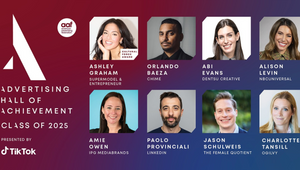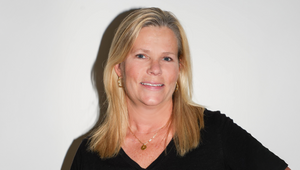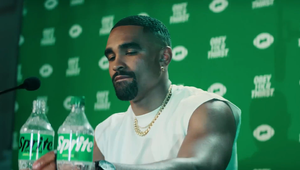
The State of NIL: Unlocking Real Value in a Maturing Market

When Texas quarterback Quinn Ewers unexpectedly slid to the seventh round of the NFL draft, he signed a contract worth $4.3 million over four years. Had he instead chosen to stay in college and use his remaining eligibility, he could have reasonably made just as much or more - in just a single year.
The idea that a college athlete might delay a professional career for financial reasons may have at once been far-fetched. Today, it’s becoming the norm.
Name, Image, and Likeness (NIL) is no longer just a buzzword, but a maturing market with a projected valuation of $2.5 billion for the 2025-2026 academic year. Now nearing its fourth anniversary, NIL has fundamentally reshaped how athletes engage with their sports, schools, and careers.
Recent developments like the landmark House v. NCAA settlement signal that even more dramatic changes still lie ahead. This move toward revenue-sharing models sets the stage for the transition from student-athletes to student-employees, which could mean fewer roster spots, the elimination of less-profitable sports, and a shift in the NIL agency ecosystem from third-party collectives to official university governance.
As this new era unfolds, NIL will continue to transform athletics, particularly for women athletes, many of whom now command NIL valuations that far surpass first-year professional salaries. For athletes in this novel predicament, staying in school is becoming an increasingly attractive and financially sound choice.
NIL is transitioning from an early gold rush mentality to a thoroughly structured and developed ecosystem, and brands and creators can no longer afford to rely on hype alone to connect with consumers at scale. Success in the next chapter of NIL will require treating NIL partnerships as professional deals, prioritising real value exchange, and thinking strategically beyond the college game.
Leveraging Micro-Communities at Scale
The line between athlete and influencer continues to blur, with fans craving emotional and relatable off-the-field content. Actual game performance seems to correlate less with popularity, while brand building and social media savvy are the keys.
In 2024, most NIL social media deals earned athletes under $1,000, revealing a rather stark divide between the top earners and the average player.
For brands, this means that the scale and number of small deals offer an advantage: highly targeted, hyper-local access. Activating successfully at scale demands smarter measurement and creativity, but by treating athletes like influencers within their communities, brands can execute impactful strategies without putting all their eggs in a single basket.
The Rise of Superstars (Plus Super Costs)
The sheer potential of NIL dollars to reach seven-figure highs means more athletes opting to remain in college for longer periods of time, maximising their contracts before going pro. In the next era of NIL, this trend will only continue, as changes to the market landscape are poised to drive college athlete valuations sky-high.
As revenue-sharing models become the norm, these dollars will intertwine with scholarship spending, forcing schools to make difficult decisions. Universities with higher spending power may rethink roster size and construction, and mid to lower-sized schools may have to eliminate entire programs just to keep up.
With smaller and more competitive rosters on the horizon, NIL and revenue-share spending will concentrate on the few top key players. Brands will need to invest heavily in top college talent, which may begin to reach professional levels, at least in cost.
At the same time, the rise of player-centric fandom is reshaping what it means to be a fan–a trend already reflected in professional sports. In the NBA, the majority of teams now have fewer followers on Instagram compared to their most popular star. As this gap between traditional and player-first fandom widens, high-profile brand deals should prioritise targeted storytelling around stand-out individuals rather than teams.
Providing Real Value
Since schools will have direct governing control over athlete compensation through revenue sharing (as opposed to third-party collectives operating in a regulatory grey zone), athletes may become less reliant on brand deals to earn income, especially when brand messaging is not a direct match. Selectivity among top prospects is positioned to increase, and brands will have to find new and meaningful ways to provide actual value for athletes beyond a dollar sign.
Brand partnerships must be just that, partnerships: true relationships built on mutual value and alignment. Beyond this, brands have the opportunity to provide support to athletes navigating both their careers and the complex legal, branding, and negotiation hurdles of the NIL ecosystem. NIL deals must be treated with the same professionalism expected in the pros, as this stream of income is no longer just a side hustle for many athletes.
There is also a significant market opportunity for long-term growth through loyalty. Productive athlete-brand partnerships that transfer successfully from college to the pros and beyond are few and far between, and this territory is ripe for brands to explore. Brands that position themselves as partners in building an athlete’s career narrative (and not just paying for a one-off sponsored post) will win loyalty. This is where the real NIL value exists.
As brands, athletes, and universities move forward into the next era of a category that has far surpassed its initial expectations, further regulation and consolidation will come into play. Athlete empowerment is already at an all-time high and will continue to expand and challenge the norm with revenue sharing and the long-term potential for unionisation.
By adding genuine value, investing early, and viewing NIL not as a transactional channel but as a chance to work long-term with the next generation of superstars, brands can rise atop the noise and win in a category with the potential to revolutionise marketing and sports alike.















